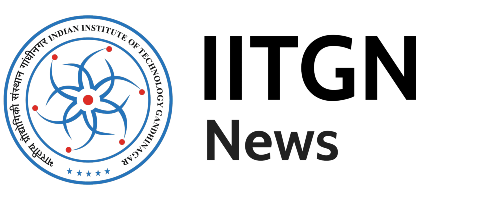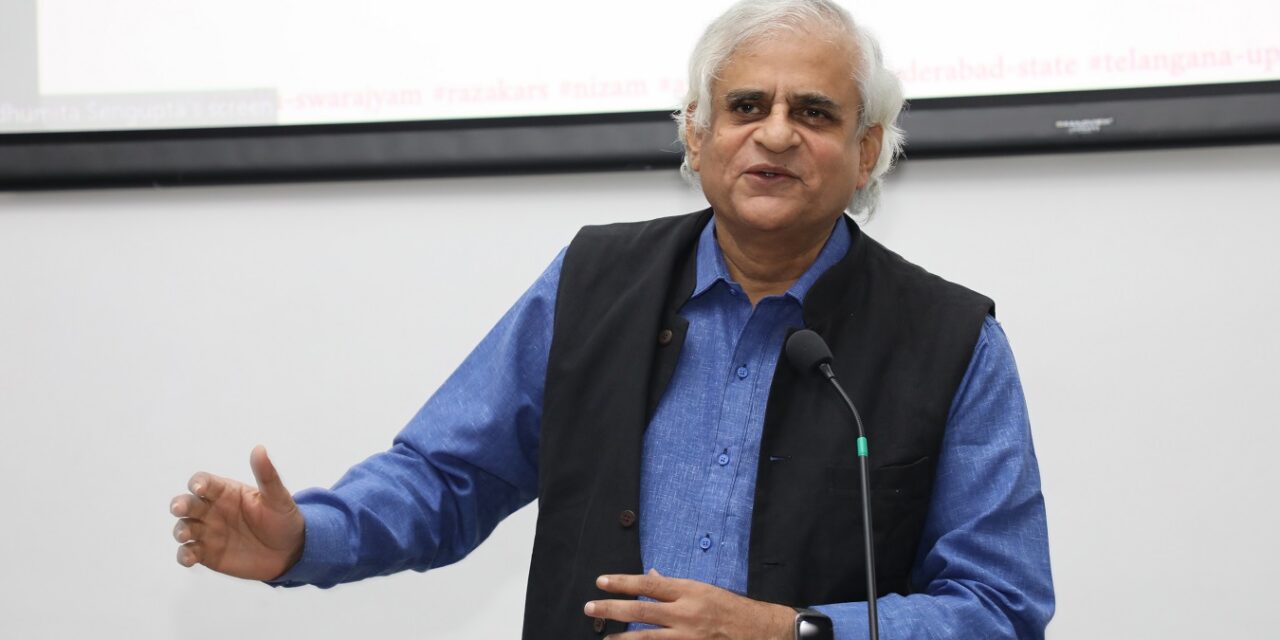STORY CREDITS
Writer/Editor: Shivangi Vasudev Bhatt
Photo: Media and Communication, IIT Gandhinagar
The Humanities and Social Sciences (HSS) discipline of the Indian Institute of Technology Gandhinagar (IITGN), as a part of its Dialogues Seminar Series, organised a talk by noted journalist, author, and founder editor of People’s Archive of Rural India (PARI), Prof P Sainath, on September 14, 2022, on the topic “Who brought India its independence?”.
In this talk, Prof P Sainath, currently a Scholar-in-Residence at IITGN, gave a vivid account of some of the last surviving freedom fighters, whom he described as “foot soldiers” of the Indian independence struggle. The people who are ordinary Indians, who fought without thought of reward, and who were quite unsure of whether they would live to see the freedom they fought for or not. During the talk, Prof Sainath introduced the participants to incredible stories of these freedom fighters, including Late Mallu Swarajyam, a lady freedom fighter from Telangana, armed only with slingshots and led the freedom struggle against the Nizam rule; Late Ramchandra Sripati Lad, popularly known as Captain Bhau, who founded ‘Toofan Sena’ and led an armed revolution against the British in Maharashtra’s Satara and also raided a train carrying British treasury to help the poor; and Hausabai Patil, another strong-willed woman from Maharashtra who became an underground freedom fighter at an early age and attacked the British establishments in the Satara region. Unsung heroism and stories of 15 such freedom fighters from all strata of Indian society, including five women freedom fighters, have been documented in Prof Sainath’s soon-to-be-published book by Penguin – ‘The Last Heroes: Foot Soldiers of the Indian Independence Movement’.
Further, he gave a brief introduction of some of the notable tribal uprisings during British rule. Prof Sainath also emphasised that khadi is one of the most important symbols of the Indian freedom struggle, and so the Indian flag should be made only from khadi cloth made by handloom weavers.
Our history textbooks have reduced the winning of our independence to only a handful of Oxbridge educated heroes. Even those heroes, who played an important role, knew that the real force of the struggle came from ordinary Indians, often the most marginalised people that suffered the most unbelievable levels of exploitation and unimaginable levels of inequality. Yet the books, films, music, and writings of mainstream society almost never captured the stunningly heroic tribal revolts that challenged British rule from day one.
Prof P SainathSharing his thoughts about recognising and celebrating these ordinary Indians, most of the last surviving generation of whom are above 95 years of age, and their extraordinary contributions to the Indian freedom struggle, Prof Sainath said, “In 5-7 years from now, no single person would be alive who fought in the Indian freedom struggle with no hope for personal reward. It is disappointing to know that none of them have been involved or interviewed in celebrating 75 years of India’s independence. This is our last chance to recognise and celebrate our living freedom fighters and share their stories with our young generation, something that we do at the People’s Archive of Rural India.”
The engaging talk ended with an interactive discussion and Q&A session with Prof Aashish Xaxa, Assistant Professor, HSS, and discussant for the talk, during which Prof Sainath pointed out, “All these unsung heroes, freedom fighters, were riders of justice, freedom, liberty, and ‘my right to my life’. They were focused on the idea of justice. The book that I have written documenting 15 of them is representative of millions of such people who fought for our country’s freedom. We need to celebrate them when they are around, or they will be gone soon. We need to know their stories in order to better script our own, to know who we are and where we came from. We need their ideals and experiences to be better human beings ourselves.”
This news has been covered by some of the leading Indian newspapers and media agencies. Click on the links below to read more.

